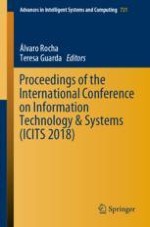This book includes a selection of articles from the 2018 International Conference on Information Technology & Systems (ICITS 18), held on January 10 – 12, 2018, at the Universidad Estatal Península de Santa Elena, Libertad City, Ecuador. ICIST is a global forum for researchers and practitioners to present and discuss recent findings and innovations, current trends, lessons learned and the challenges of modern information technology and systems research, together with their technological development and applications. The main topics covered include information and knowledge management; organizational models and information systems; software and systems modeling; software systems, architectures, applications and tools; multimedia systems and applications; computer networks, mobility and pervasive systems; intelligent and decision support systems; big data analytics and applications; human–computer interaction; ethics, computers & security; health informatics; and information technologies in education.
